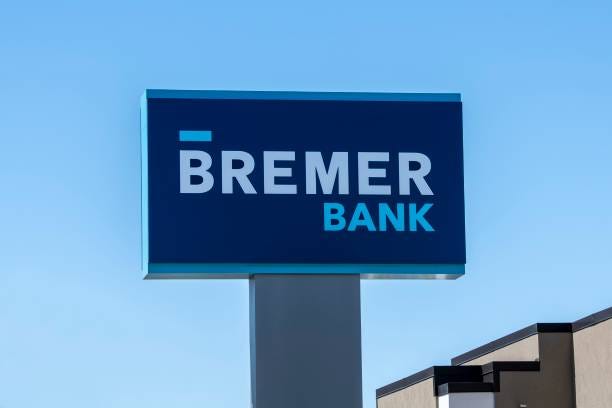
Bremer Bank is proud its long legacy of community involvement serves as an example of the impact a financial institution can have on its customers, employees and the communities it serves.
Old National Bank announced in November it will purchase Bremer Bank, which operates through a network of 48 branches located across 43 cities and towns within Minnesota, in addition to 22 offices across North Dakota and Wisconsin.
Certainly, Bremer Bank has maintained a strong commitment to serving its customers, but over its existence, the organization has developed a distinct blueprint for building strong communities.
“It goes back to our founder (Otto Bremer) and the creation of Bremer Bank in 1943,” said Bremer Bank President and CEO Jeanne Crain. “He believed if you were a bank helping individuals or businesses thrive, then communities would thrive.”
Since its founding, Bremer has invested in several programs designed to help people and families who can use support. A sampling of the most recent efforts includes a partnership started in 2017 between Bremer Bank and Twin Cities Habitat for Humanity called the Home Loan Impact Fund which makes the dream of home ownership a reality for families in the Twin Cities who might not otherwise qualify because of income.
“The program purchased $150 million in mortgages in the last six years resulting in 760 homes,” Crain explained. “Those loans helped to double the number of people Habitat for Humanity was able to serve.”
Bremer recognizes its partnerships are critical to reaching families. That’s why the organization recently celebrated five years of working with United Way to help Minnesotans transitioning from homelessness through its annual Bremer Home For Good campaign. During the event employees work like an assembly line packing boxes filled with essentials like plates, silverware, cleaning supplies, blankets and towels all beneath a note that reads,“We hope these items are useful as you settle in. Welcome home!” Each kit is earmarked for a family in need, specifically, those transitioning out of homelessness and into stable housing.
“When every individual has access to safe and reliable housing, our communities are stronger,” Crain said.
In its five years, the Bremer Home For Good initiative has reached 3,500 families and individuals across the Upper Midwest. According to the Minnesota Homeless Study, 10,522 Minnesotans experienced homelessness in 2023, the second highest since the study started in 1991.
In 2019, Bremer Bank partnered with the city of St. Paul and Mayor Melvin Carter for a program called CollegeBound St. Paul which provides every child born in the city with a savings account and a $50 seed deposit.
“Research shows jump starting a college savings account for a child helps put them on a pathway to college,” Crain explained.
According to a study by the Institute for Higher Education Policy and Prosperity Now, children with college savings between $1 and $499 are three times as likely to attend college and four times as likely to graduate as those without any college savings.
Bremer Bank noticed another immediate need after the murder of George Floyd.
“After the riots, we took the opportunity to look at where we were not physically present,” Crain recalled. “We noticed an opportunity to be more visible to a community we were trying to serve.”
The result is the Bremer Bank location at 2130 E. Lake Street in Minneapolis.
While the programs, partnerships, initiatives and behind-the-scenes work at Bremer Bank to use its resources to benefit all Minnesotans is far and reaching, Crain says the goal has been rather simple.
“We have been an organization that pays attention to the needs of the community. We were trying to make a difference.”
